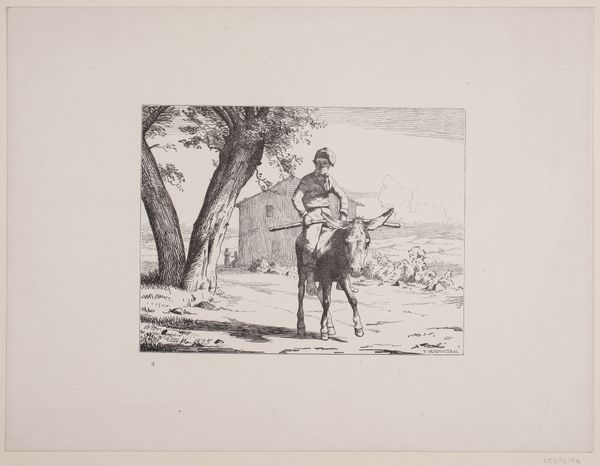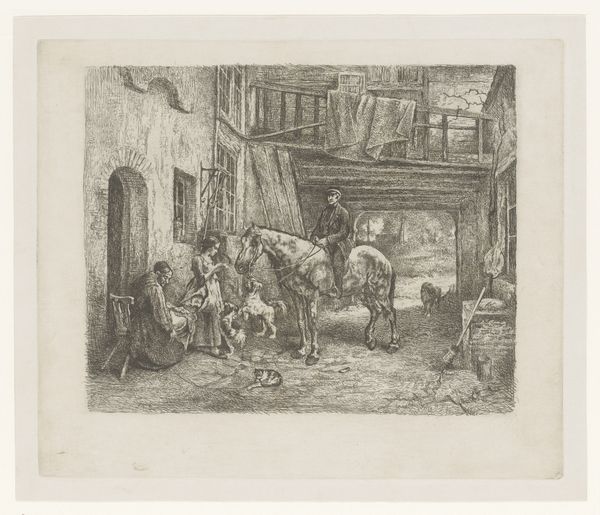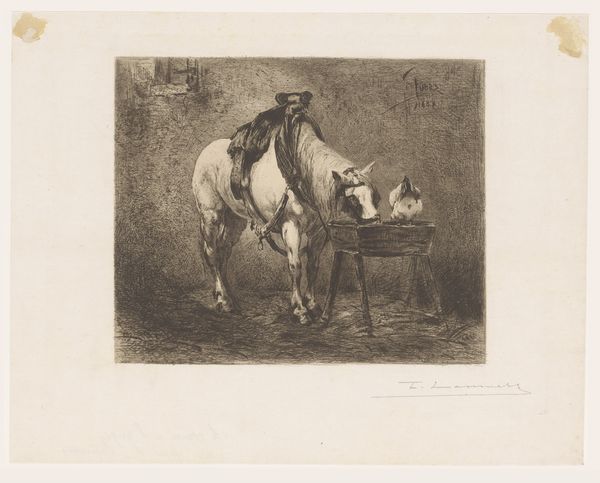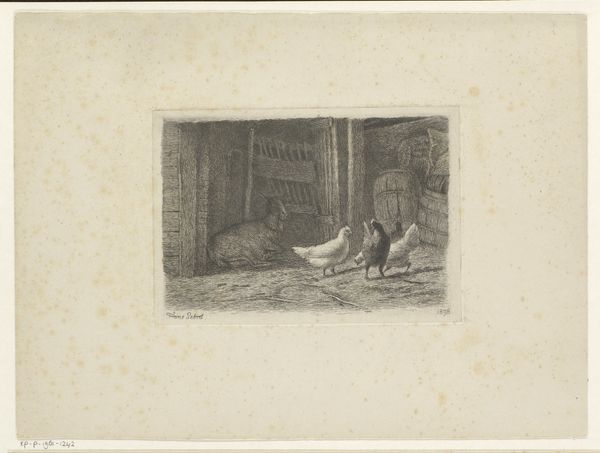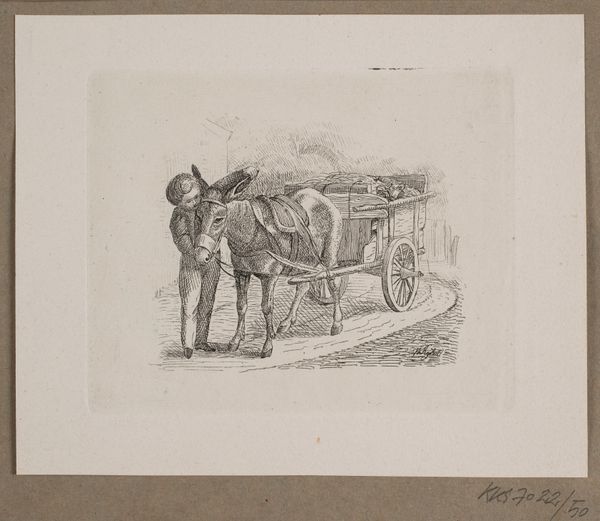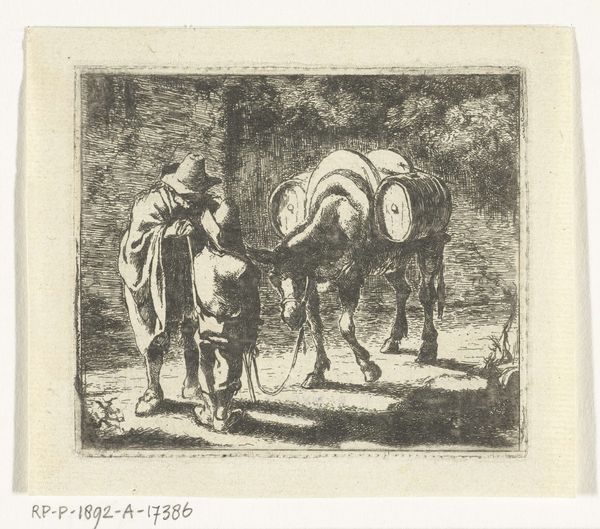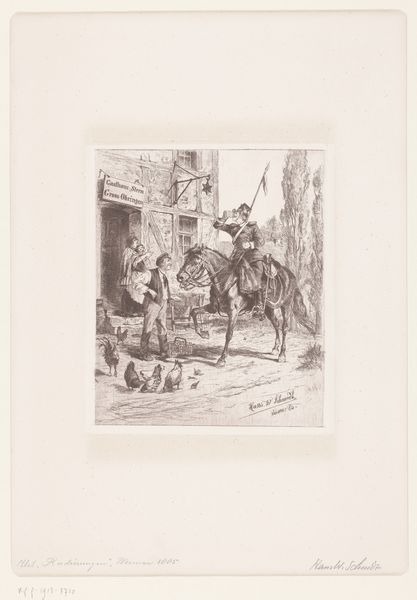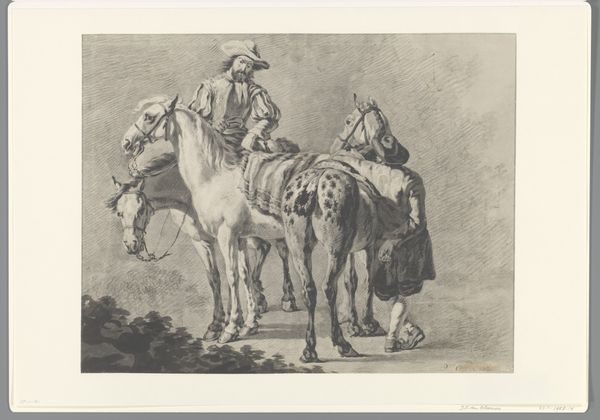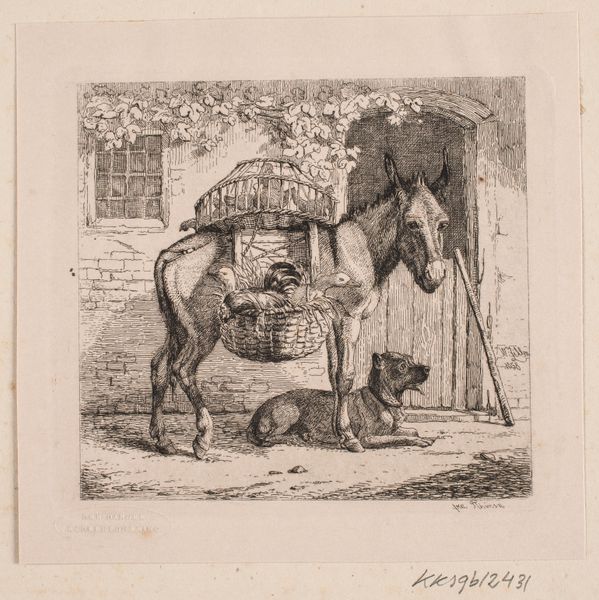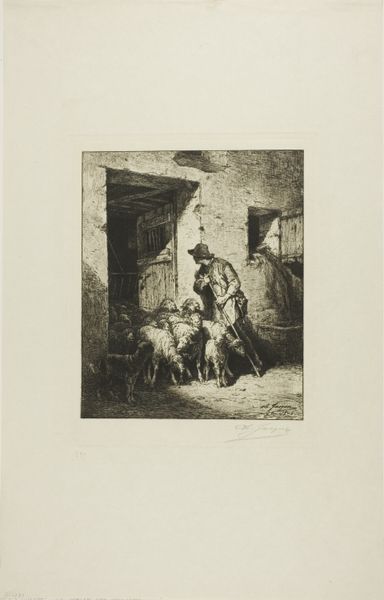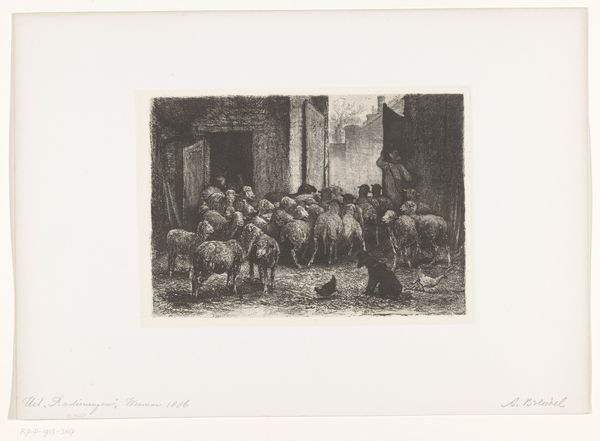
drawing, print, etching, pencil
#
drawing
# print
#
etching
#
pencil sketch
#
landscape
#
figuration
#
pencil
#
orientalism
#
line
#
genre-painting
#
tonal art
#
remaining negative space
#
realism
Dimensions: height 178 mm, width 217 mm, height 209 mm, width 294 mm
Copyright: Rijks Museum: Open Domain
Curator: Willem de Famars Testas, "Man met ezel," dating back to 1890. It's rendered in pencil and etching. Editor: A touch melancholic, no? The muted tones amplify a quiet dignity, the detail in the wall and animal contrasts the flatness of negative space, quite striking. Curator: His oeuvre, including pieces like this, often reflects a keen interest in Orientalism. Note the turban and clothing details. What strikes me is how Testas uses line to convey texture and weight. Look closely at how the lines deepen around the donkey's form, compared to the lighter strokes used to render the building in the background. Editor: Right. It makes me think of the printmaking process, the way etching emphasizes process, the literal pressure applied to a plate, inverting an image to be made repeatable for wider distribution. What was it about figuration or the exotic allure that drew him in? Curator: The subject may reflect colonial interest. But looking closely, it’s almost as though the artist himself felt some identification, or a shadow self within these figures. Editor: It's tempting to assign narrative weight to that possibility. Maybe instead we could think about the socio-economic dynamics represented? Is this just an ethnographic study for collectors back in Europe, or does it point towards global supply lines, colonial trades manifested in printed form? Curator: Hmm. Considering this was crafted in 1890, as Europe was increasingly consuming materials sourced globally, framing it this way is quite insightful. Yet artmaking itself is also a product of these conditions! Editor: Precisely. The kind of pencils and papers used; what kind of ink, even who bought the prints! Considering such things makes us appreciate it as more than aesthetic or imaginative. Curator: It definitely urges a broader consideration, beyond merely aesthetic or artistic intent. Editor: Indeed, seeing it in those terms illuminates both how the art came to exist and the structures of value which continue to affect its existence today.
Comments
No comments
Be the first to comment and join the conversation on the ultimate creative platform.
